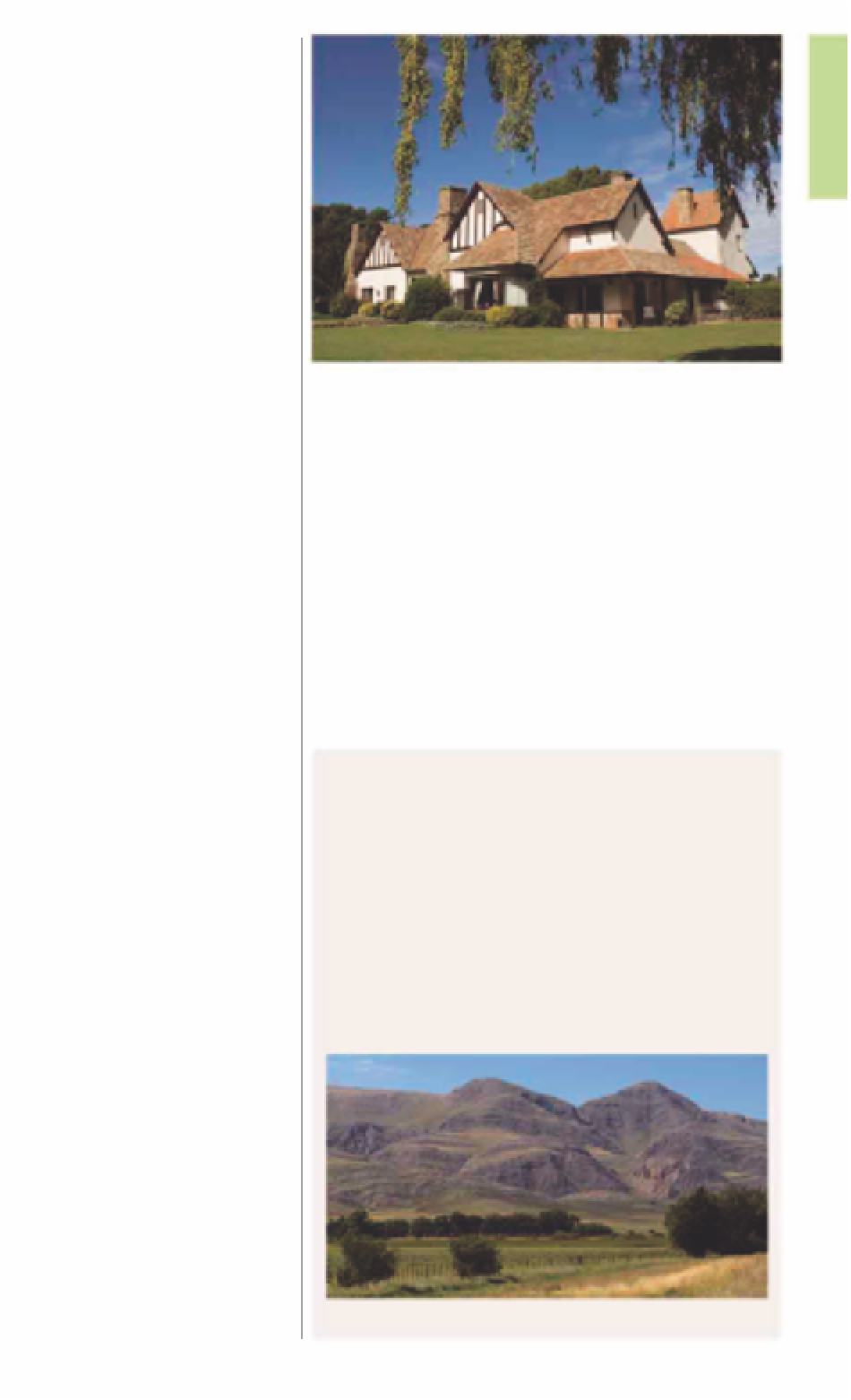Travel Reference
In-Depth Information
riders, as well as casual week-
enders. The area is also popular
with nature lovers as it supports
a large variety of wildlife, which
includes foxes, pumas, guanaco,
armadillos, and the copper
iguana. There are three small
villages from which to access
the range: Tornquist, Villa Ventana,
and Sierra de la Ventana. They are
all quiet, laid-back places, but
the last has a greater range of
services for tourists, as well as a
choice of several small hotels.
e
Parque Provincial
Ernesto Tornquist
Road map
C3. 16 miles (25 km) NW
of Sierra de la Ventana village.
Te l
(0291) 491-0039.
@
Open
Jan-Feb: 8am-5:30pm daily;
Mar-Dec: 9am-5pm daily.
Covering an area of 26 sq
miles (68 sq km), this park
offers some of the area's best
climbing. It has wrought-iron
gates at the entrance, beyond
which is a small visitors' center
providing useful information
on the local ecosystem via
audiovisual aids. It houses
displays of the area's flora
and fauna and a 3-D topo-
graphical map. Within the park
limits is the 3,700-ft (1,130-m)
Cerro de la Ventana, with a
well-marked trail leading to
the summit. There are also the
moderately difficult Cerro
Blanco and Claro Oscuro
circuits, which offer specta-
cular views of the area.
Numerous short strolls can
also be made to waterfalls, the
most popular of which is the
Garganta del Diablo. The
weather can turn unpredictable
above 3,300 ft (1,000 m) and it
would be best to hire a local
guide on the harder treks.
An interesting site within
the park is the
Reserva Natural
Integral
. This is a strictly
controlled area where herds of
wild horses can be seen. There
are also a number of caves, one
of which has ancient paintings
on its walls. Birds of prey and
common carrion eaters such as
chimangos
and
carranchas
can
be seen circling on thermals
above the range.
The quiet Estancia Cerro de la Cruz surrounded by greenery
r
Estancia Cerro de
la Cruz
Road map
C3. 2 miles (3 km) E of
Sierra de la Ventana village.
@
0
®
∑
estanciacerrodelacruz.com
Designed by renowned
architect Alejandro Bustillo, this
English-style wood-and-stone
house is one of the grander
estancias in southern Buenos
Aires province. The estancia was
acquired in 1935 by Argentinian
engineer Eduardo Ayerza, who
started the first breeding ranch
specializing in Polled Hereford
cattle in Argentina. During its
heyday, the ranch had a
separate butler's residence,
dormitories for employees,
huge barns, and nine silos
(warehouses) for storing
grains and cereal. Black and
white photographs on the
inside walls of the main
house record these times.
Now open as a five-room
hotel, it is popular with nature
tourists, golfers, and wealthy
hunters who come to this
region of Argentina for
hunting expeditions.
The Mountains of the Pampas
Long before the cataclysms that brought about the Andes chain,
violent geological movements beneath the Pampas forced the
land upwards to 1,650-3,600 ft (500-1,100 m) above sea level. The
two main ranges are Sierra de la Ventana and Sistema de Tandilia.
The former is formed mainly from sedimentary rock dating from the
Paleozoic period (570-250 million years ago), and its cool blues and
grays make for a striking contrast with the Pampas spread below. The
jagged ridges and high peaks mean trekking can be challenging.
Sistema de Tandilia is older, with formations dating back to the
Precambrian period (4,600-575 million years ago), and has smooth
curves, ideal for light treks. Rheas,
chimango
hawks, armadillos, and
European hares are common sights on these highlands.
View of the Sierra de la Ventana rising from the Pampas plains



































